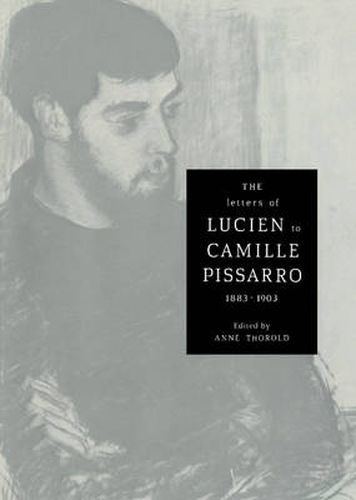Readings Newsletter
Become a Readings Member to make your shopping experience even easier.
Sign in or sign up for free!
You’re not far away from qualifying for FREE standard shipping within Australia
You’ve qualified for FREE standard shipping within Australia
The cart is loading…






The Impressionist painter Camille Pissarro’s eldest son, Lucien, lived in England in 1883, then in Paris until 1890 when he finally settled in England. These travels gave rise to a substantial exchange of letters, most of which have survived. Camille Pissarro’s letters are well-known but Lucien’s replies, which describe the world of post-William Morris London, have hitherto lacked a full scholarly edition. Lucien, also a painter, exhibited only in the last of the Impressionist exhibitions in Paris, although both he and his father were members of the neo-Impressionist group. To earn a living, Lucien turned to wood engraving, which led to his printing of rare books illustrated and printed by him on his Eragny Press in London. He even ceased to paint for a period. The technical discussion of the translation of drawings to woodblocks engraved by Lucien gives a unique insight into the methods employed, while intimate views on the work of their now famous friends, mainly painters, writers of anarchist theoreticians in Paris, or contemporary painters reacting to the Pre-Raphaelites in London and the Private Press movement in spired by William Morris, mingle advice on painting methods with views on current art trends, family matters, and their struggles for recognition and enough money to even post their letters.
$9.00 standard shipping within Australia
FREE standard shipping within Australia for orders over $100.00
Express & International shipping calculated at checkout
The Impressionist painter Camille Pissarro’s eldest son, Lucien, lived in England in 1883, then in Paris until 1890 when he finally settled in England. These travels gave rise to a substantial exchange of letters, most of which have survived. Camille Pissarro’s letters are well-known but Lucien’s replies, which describe the world of post-William Morris London, have hitherto lacked a full scholarly edition. Lucien, also a painter, exhibited only in the last of the Impressionist exhibitions in Paris, although both he and his father were members of the neo-Impressionist group. To earn a living, Lucien turned to wood engraving, which led to his printing of rare books illustrated and printed by him on his Eragny Press in London. He even ceased to paint for a period. The technical discussion of the translation of drawings to woodblocks engraved by Lucien gives a unique insight into the methods employed, while intimate views on the work of their now famous friends, mainly painters, writers of anarchist theoreticians in Paris, or contemporary painters reacting to the Pre-Raphaelites in London and the Private Press movement in spired by William Morris, mingle advice on painting methods with views on current art trends, family matters, and their struggles for recognition and enough money to even post their letters.